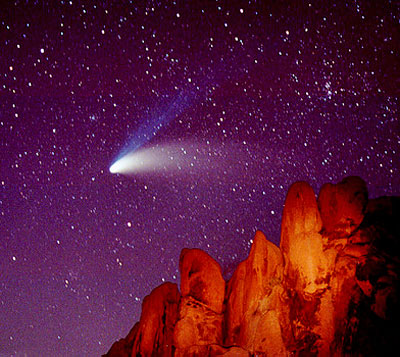|
by Wally Pacholka on April 5, 1997
from the Joshua Tree
National Park in California.
A team of scientists has released a paper in the March edition of the Journal of Cosmology supporting claims from an earlier study, that a meteorite that crashed in Sri Lanka in December 2012 contained extraterrestrial fossils.
The initial paper, "Fossil Diatoms in a New Carbonaceous Meteorite," was published in January 2013 and subjected to criticism that the diatom fossils (a form of algae) found in the meteor had been contaminated by earth water and the fossils were terrestrial in origin.
The new study authored by a team of scientists from Cardiff University, University of Buckingham, and University of California San Diego, found that the rock was definitely a meteorite and that the meteor had not been contaminated, and the fossils in it were ancient.
The new scientific study gives strong support to Professor Chandra Wickramasinghe’s theory of Panspermia, that ancient microbial life has spread throughout the galaxy by comets.
The new scientific study, "The Polonnaruwa Meteorite - Oxygen Isotope, Crystalline And Biological Composition," appeared in the March 5 (2013) edition of the Journal of Cosmology.
It was first reported on March 11 by Sebastian Anthony, in ExtremeTech, who claimed that the new study,
The March 5 study directly addressed the main criticism leveled against the January paper that the meteor rock samples were contaminated by Earth water, and that the Diatom fossils were of terrestrial origin.
Professor Patrick Kociolek from the University of Colorado wrote a response to Phil Plait from Bad Astronomy that:
Plait and other critics used Kociolek’s claim that the meteor sample was contaminated by freshwater.
Using a sophisticated testing process, the new study, however, conclusively dismissed the contamination thesis:
The March 5 study also addressed criticism that the Sri Lanka rock samples were not meteorites; it concluded:
This March 5 scientific study helps confirm Wickramasinghe’s theory of Panspermia which the authors themselves point out:
The new study is sure to raise more scrutiny of the Sri Lankan meteor sample and the idea that life is quite common throughout the universe, and can be spread by comets.
|

